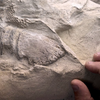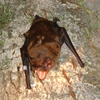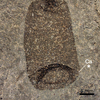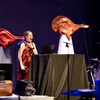Learn How Scientists Made Woolly Mice!

A woolly mouse next to an unedited lab mouse
Post Author - Ellis Nolan
In an experiment that would make Dr. Hammond proud, researchers at Colossal Biosciences have used Mammoth DNA and gene editing technology to create “woolly mice,” a step towards their ultimate goal of recreating or “de-extincting” a woolly mammoth.
The mice in question have thick, fluffy coats of fur and are beige colored, but in most other ways resemble regular mice. The company eventually plans on using Asian elephants, which share over 90% of their DNA with woolly mammoths, with similarly edited DNA to resemble the traits of a woolly mammoth. However, Asian elephants have a long gestation period of over 20 months, and thus mice were chosen as a “test run” for the gene editing process since their gestation period is just under 3 weeks
The Colossal researchers hope to apply their process toward creating woolly mammoths
It’s important to note that scientists did not simply “cut and paste” mammoth DNA into these mice. Rather, certain specific genes were targeted, 10 to be exact, that the researchers hypothesized to be related to mammoth-like features. These genes were edited in mouse embryos using CRISPR technology and then transferred to the wombs of mouse host mothers. Thus far, the edits do not seem to have impacted the health of the newborn mice; however, scientists are unsure if the changes would help them survive in colder climates, as a mammoth would have to.
The first step towards "de-extinction?"
In “de-extinct-ing” woolly mammoths, Colossal's intention is to create an animal that will fill the gap left in various ecosystems by the woolly mammoth’s extinction rather than to create a 1:1 copy. A biological “Ship of Theseus,” if you will. However, many scientists are skeptical, suggesting that the company is creating a human interpretation, or educated guess, of what a woolly mammoth would have looked like, as well as what features it would have had and that introducing such a hybrid in the wild could have unforeseen consequences.
Want your own piece of Mammoth DNA? We can’t say whether it’ll help you clone one, but check out our collection of Mammoth specimens here!
Featured Product
Joe Frazier Boxing Glove
Cool Things!

Is “Paul is Dead” Dead?: Unpacking One Of Pop Culture’s Most Enduring Conspiracy Theories

Scientists Discover Hooves and Skin in Preserved Dinosaur "Mummies!"
A dinosaur discovery just in time for Halloween! In a new analysis of a group of fossils from Wyoming, Scientists have determined this group of fossils are dinosaur “mummies,” with preserved skin and even hooves.

Scientists Record a Bat Catching Birds Mid-Flight!
Bats, birds, screeches, oh my! In a reverse-Hitchcock twist, a new study reveals that a species of European bat catches and eats birds mid-flight.
Specimen Deep Dives

The House that Ruth Built: The Story of the Old Yankee Stadium

The Queen of the Skies: the Story of the Boeing 747

Old Ironsides: The USS Constitution and the Start of the U.S. Navy
Long Form Articles

The Artist Behind the Macintosh: Susan Kare and Apple Computers
While the two Steves, Jobs and Wozniak, are the most well known faces behind Apple computers, equally important to the products and culture of the company were those who crafted the experience of using their computers through design. The most notable of these visual architects was Susan Kare, a designer responsible for “humanizing” Macintosh computers.

Can I Lick It? Yes You Can!
Have you ever been unable to tell if a fossil was really a fossil, but you were too embarrassed to admit it? Have you ever wanted to lick a fossil just because, but you didn’t want to risk judgment from your peers? Well, good news! You can kill two birds with one stone! Licking a fossil can actually help you determine if it’s the real deal or just another rock.

Is It Legal To Own a Meteorite: How to Start Your Outer Space Collection!
Meteorites are some of the rarest geological specimens to be found on Earth. Of course, since these stones are not of our world, purchasing them can sometimes be a confusing process. Is it legal to own a meteorite? In short, yes! Read on for help starting your cosmic collection!

















